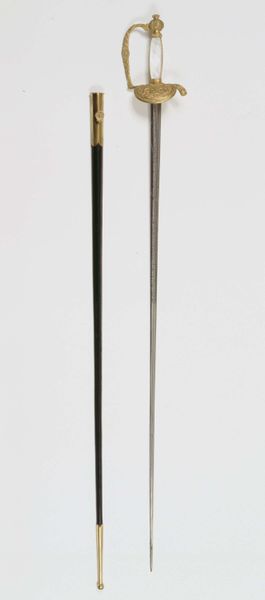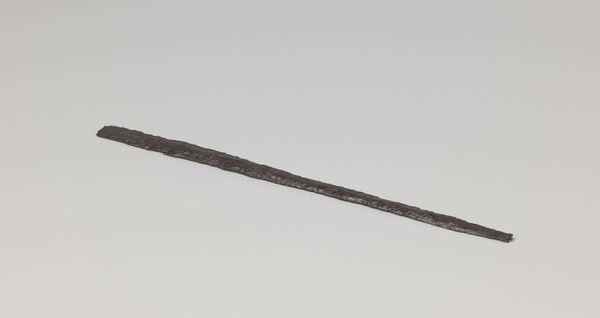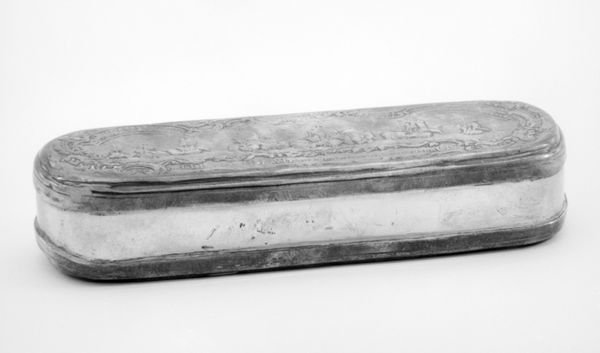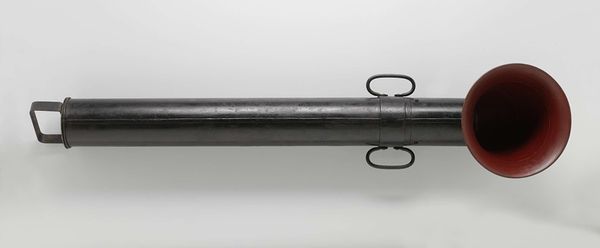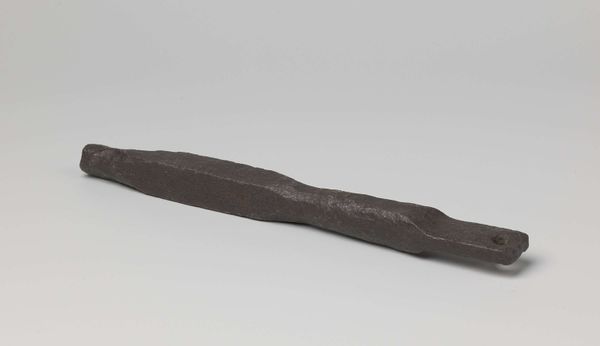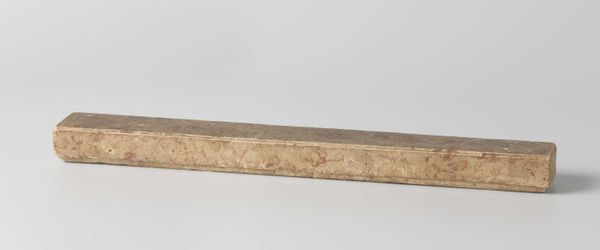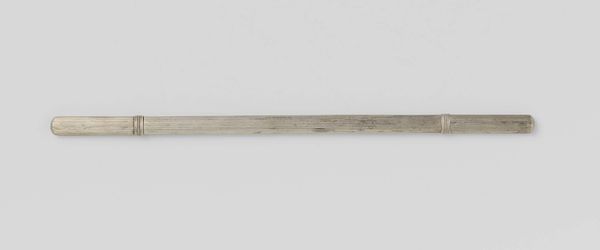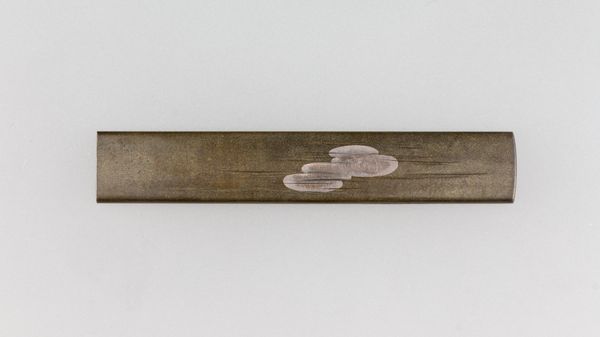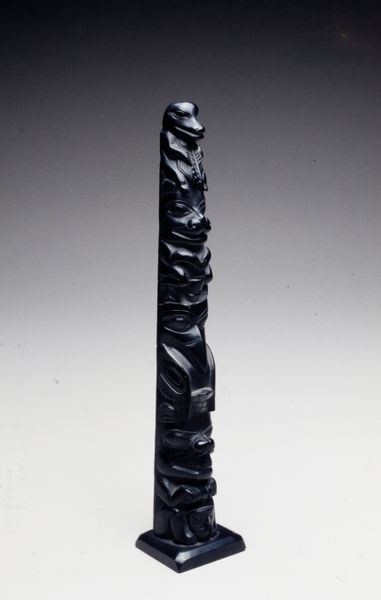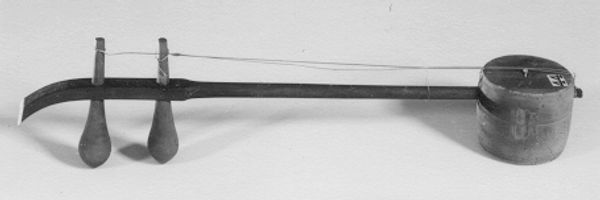
Dimensions: object: 110 x 1220 x 120 mm, 6.4 kg
Copyright: © Colin Self. All Rights Reserved, DACS 2014 | CC-BY-NC-ND 4.0 DEED, Photo: Tate
Curator: Here we have Colin Self's 'Hot Dog Sculpture,' currently held in the Tate Collections. It's quite striking in its simplicity and scale, don't you think? Editor: It's like a culinary monolith! The monochromatic palette certainly gives it a somber, almost industrial feel, doesn't it? A hot dog fit for a dystopian picnic. Curator: Indeed. Self's choice to render this everyday object in such a weighty form—it's over six kilograms—invites us to consider the cultural significance we attach to these mass-produced items. The texture, too, is crucial. Editor: Absolutely. The rough surface contrasts humorously with the smooth, processed nature of the real thing. There's a sense of decay, maybe even a hint of self-deprecation, simmering beneath the surface. Curator: Precisely. By exaggerating its form and materiality, Self transforms the mundane into something monumental, prompting us to question our consumption habits and the nature of desire itself. Editor: It's funny how something so simple can spark such complex thoughts. I'll never look at a hot dog the same way again. Curator: Nor I. A thought-provoking piece indeed.
Comments
Join the conversation
Join millions of artists and users on Artera today and experience the ultimate creative platform.
tate 8 months ago
⋮
Fast food was a typical subject for pop art in the 1960s. It represented consumerism and a new fast-paced society. Many artists in the 1960s celebrated consumption. But Self’s Hot Dog Sculpture focuses on the darker side of the decade. The blackened hot dog relates to military conflict. Its charred appearance reflects Self’s anxiety about a possible nuclear war. Gallery label, August 2019
